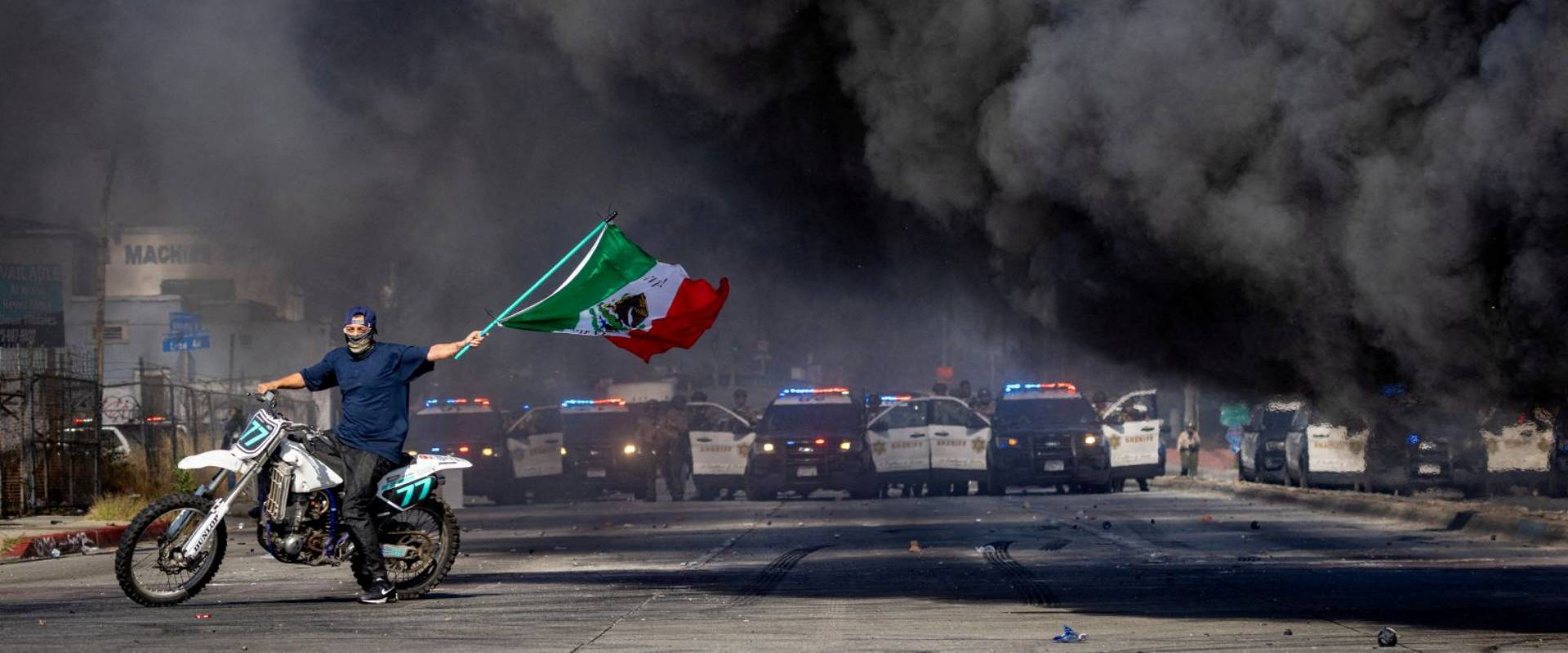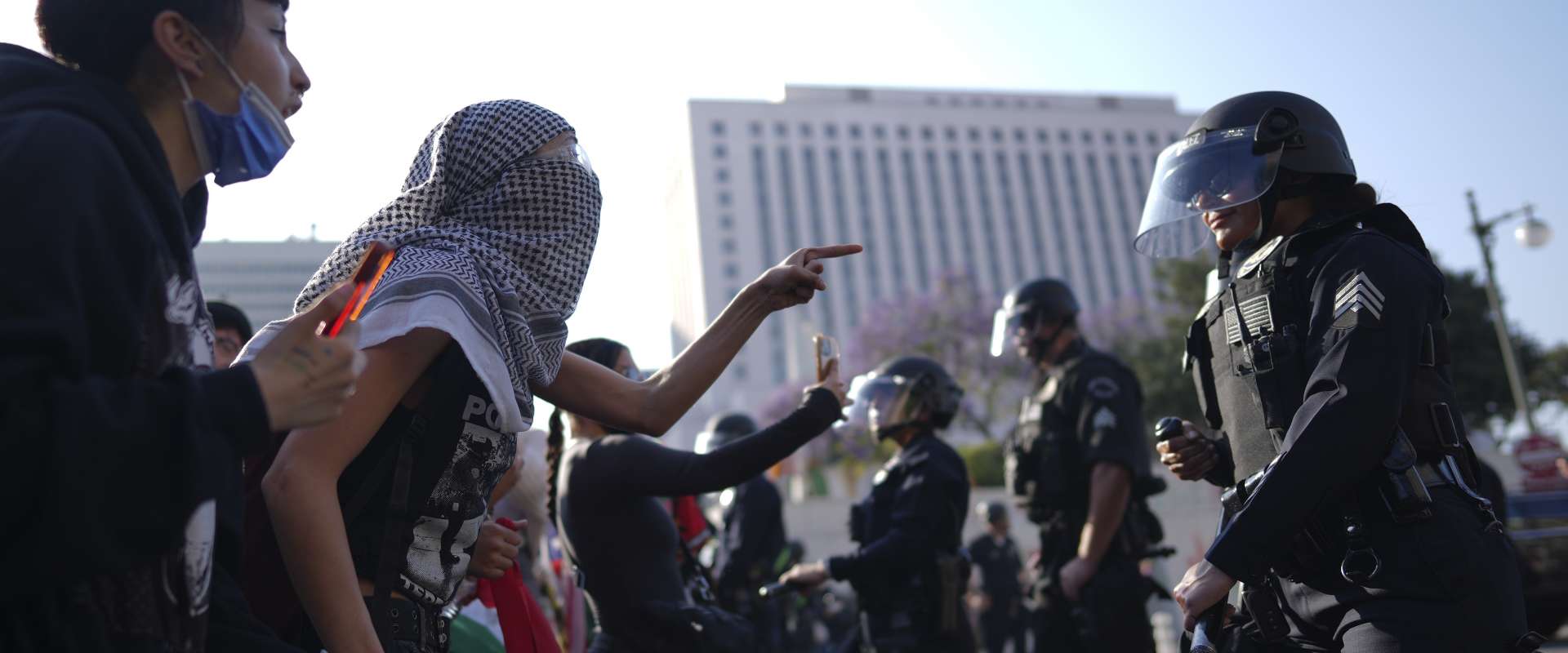The July 25 tentative agreement (TA) comes up short. Gains like the gradual addition of air conditioning in package cars, no forced overtime for drivers on days off, the end of two-tier classification for 22.4 drivers, protections against subcontracting, and partial granting of part-timer raises are a good start, and demonstrate what can be won. To win more, members should vote “no” and strike for bigger change.
For the first time in decades, strike-ready pickets graced cable news from coast to coast. Three hundred forty thousand Teamsters threatened to take hostage 6 percent of US GDP. And 3,400 pilots promised to ground air freight in solidarity. Thanks to e-commerce, Teamster bargaining power is stronger than ever, especially if a strike goes forward. The 1997 strike won 10,000 coveted new full-time jobs (by combining part-time positions), but the July 25 agreement proposes only 7,500.
UPS profits tripled following the pandemic, helping corporate squander over $5 billion this year in stock buybacks that will enrich investors without investing in production. Meanwhile, workers face death and hospitalization from heatstroke to make this bonanza possible.
A successful “no” vote and strike will boost the morale and courage of labor everywhere, and especially workers at Amazon, FedEx, and the US Postal Service. The anticlimax of 12 months of strike-readiness halting abruptly will not.
Over half of UPS workers are part-timers, mostly at UPS warehouse “hubs.” These workfloors should be centers of union power, as the place where workers are gathered in the greatest number. But part-time workers will not see $25 an hour as originally demanded. In fact, they won’t see the TA’s $23 an hour until 2027. The standard practice of NLRB-era collective bargaining norms means that workers hear from leaders a figure only reached near the end of the contract’s term, after 16 fiscal quarters of greed-flation.
The TA is a major “landmark win” by today’s standards. But it doesn’t feel like that to members, and it isn’t a landmark change in their lives. This difference between the common sense of union officialdom and the workfloor reflects what some historians call “contractualist unionism.” Collective bargaining agreements are a lasting part of the landscape. But workers lose when “good faith” norms are a union’s primary set of practices — such as no-strike clauses, gag-order agreements during negotiations, the referee role of the government, the snail’s pace and secrecy of paperwork, the bureaucratic needs of an attorney’s approach to work disputes, and the assumption that solutions are found in common-ground agreements with the boss.
Leadership claims the proposed contract is the union’s “strongest ever.” This is false. The 1934 Minneapolis Teamsters strike transformed the union movement and workers’ lives, winning the closed shop, the right to represent “inside” workers, overtime pay, seniority rights and job protections, higher raises than won today, and more. The Minneapolis contract became the model for the international union, transforming it from a weak craft union to a mass organization. The Teamsters example, plus the Toledo autoworkers’ strike and the West Coast waterfront strikes of the same year (all led by communists), spurred the formation of the CIO and the passage of the 1935 Wagner Act — the latter codifying NLRA rights still exercised today.
A successful “no” vote and strike will boost the morale and courage of labor everywhere, and especially workers at Amazon, FedEx, and the US Postal Service. The anticlimax of 12 months of strike-readiness halting abruptly will not.
Nor will IBT President O’Brien’s relationship with Joseph “Strikebreaker” Biden. O’Brien met with Biden frequently, not just over the summer, but also last autumn in the buildup to the historic railroad strike that almost was. In July of 2022, O’Brien publicly “welcomed President Joe Biden” intervening in negotiations, and in September, the union asked members to ratify a new contract, the result of “O’Brien work[ing] closely with President Joe Biden and Labor Secretary Marty Walsh.” Fortunately, it was voted down by members itching to strike.
By year’s end, Biden and Congress had prohibited the right to strike and imposed on railroad workers a contract from above. The 1934 Minneapolis strike, the 1997 UPS strike, and the 1970 postal strike all beat back similar injunctions and illegality by raising the stakes, but this time the union leaders went home.
It’s not difficult to know when management is lying. Are their lips moving? UPS CEO Carol Tomé heralded the July 25 TA as a “win-win-win agreement.” We know workers win when the rich lose, because profits come from unpaid labor. We know the company is a bad-faith bargaining partner who will manipulate every compromise and opening to undermine us, if not held in check by the workers.
Unions can regain the power and prestige once held if we rediscover our founding purpose. Real change requires action from the masses, and the labor movement needs revolutionary ideas and a program of class struggle — not contractual common ground — to transform the status of workers across the land.
More important than bargaining norms is the real balance of forces. Labor shortages and turnover compel the use of local Market Rate Adjustments (MRAs) to keep people in the door, and the wider support for Teamsters among sectors like airline pilots speak to their leverage. But the capitalists have every intention to reverse course by baiting unions into passivity and driving up “greedflation” interest rates. An opportunity like the present should be seized with both hands.
Ratifying the TA will signal five more years of class “peace.” Up to two-thirds of drivers will remain without AC for the duration of the term, with many facing heatstroke conditions during increasingly scorching summers, and this will discourage veteran drivers from reaching their full pension. Part-timers won’t receive a living wage, new hires will wait up to nine months for health benefits, and the master contract will provide inadequate PTO and no parental leave. Critically, the TA fails to deliver the life-changing reforms that unions won when they were built, like in 1934 or under the CIO. Not because we’re weaker or that life-changing reforms are less relevant, but because of a difference in vision and politics.
Socialist ideas can rearm militants who wish to press on. Militant workers should campaign for a “no” vote; teach co-workers to grieve management for contract violations, rely on one another, and refuse to snitch; and marshal Volunteer Organizing Committees to unionize Amazon and bring down Bezos. Without a big-picture alternative, we risk an uninspired membership ratifying the TA with typical rates of low turnout.
UPS management is known to routinely violate contractual rights, and much of the gains won so far won’t be secured without enforcement by stewards and members in the locals. Unions can regain the power and prestige once held if we rediscover our founding purpose. Real change requires action from the masses, and the labor movement needs revolutionary ideas and a program of class struggle — not contractual common ground — to transform the status of workers across the land.
UPS workers, don’t give up the fight for crumbs!
Vote “no” before August 22nd! STRIKE and beat the bosses!
Union militancy wins! Unionize Amazon! Make the billionaires lose!
We recommend visiting teamstersmobilize.com to support their “vote no” campaign.



